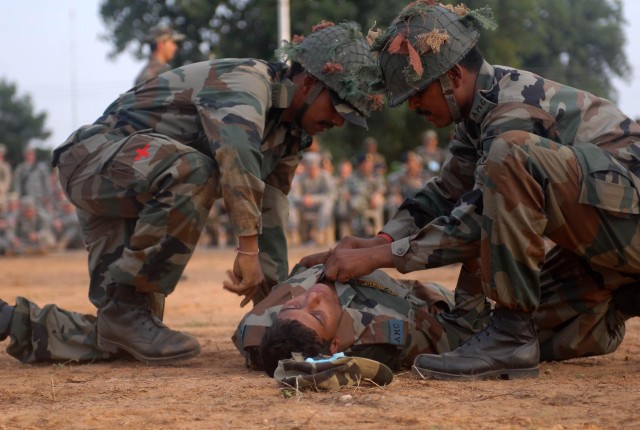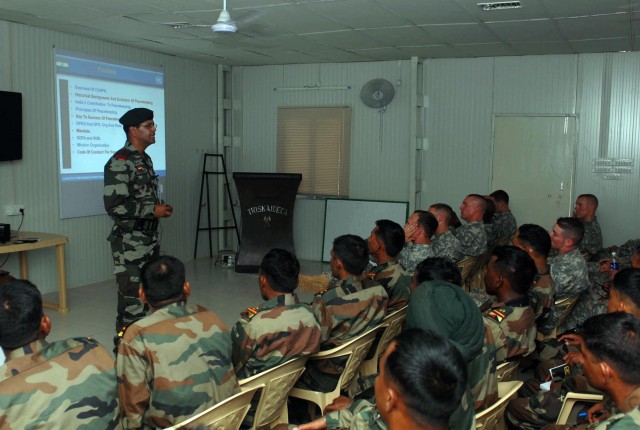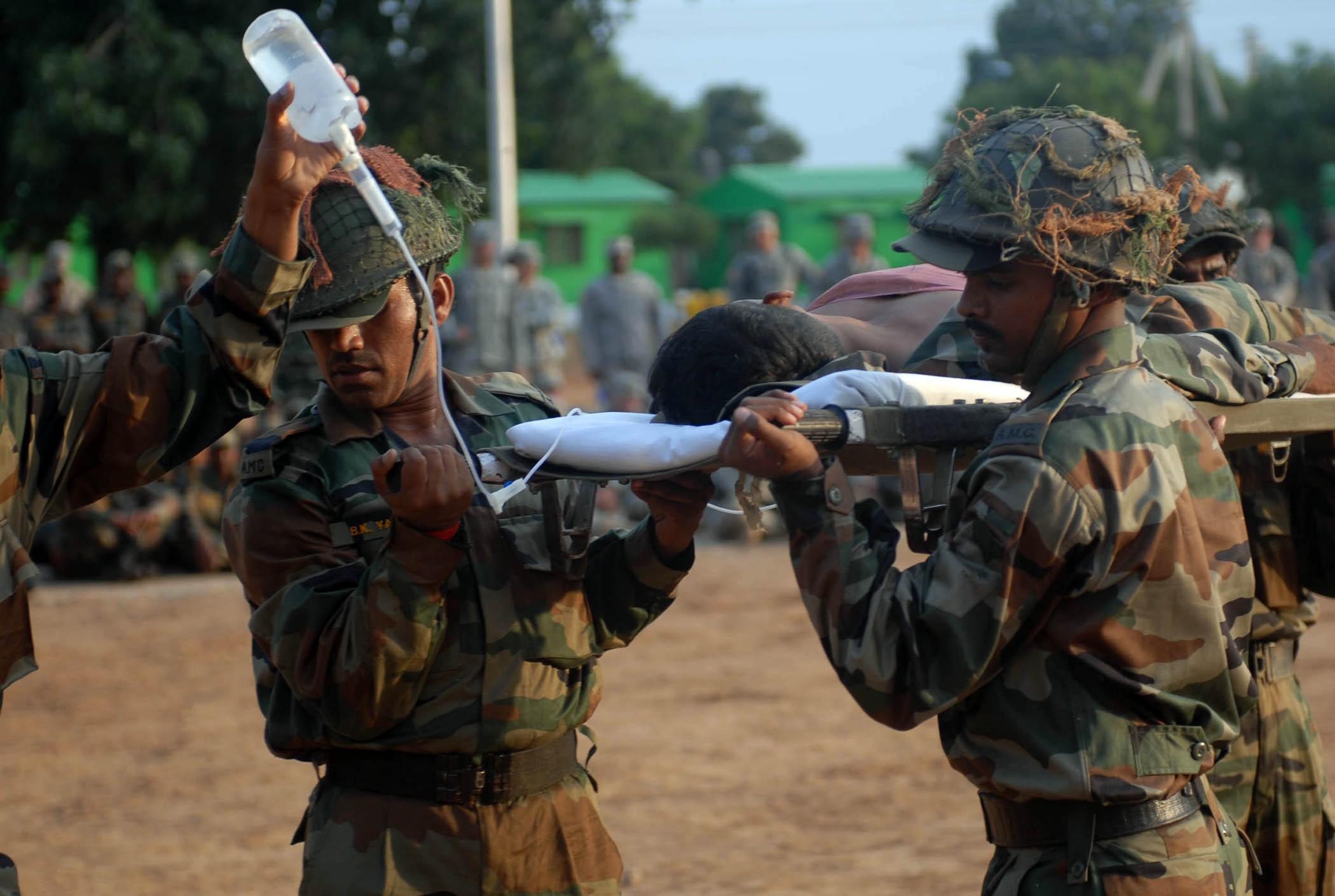CAMP BUNDELA, India (Oct. 15, 2009) - Similarities and a common effort became apparent to participants of Yudh Abhyas 09 once the U.S. and Indian armies began their training for the annual bilateral field training exercise - both on and off the field.
Tactics, techniques and procedures were the focus of a series of informational exchanges, in the form of classes and demonstrations, from both armies, which will occur daily during the two-week exercise.
"It's great to get to learn different ways to do things because we all have to be agile leaders in this Army, and it gives us more tools to conduct our jobs," said U.S. Army Maj. Paul Armstrong, squadron operations officer, 2nd Squadron, 14th Cavalry Regiment, "Strykehorse," 2nd Stryker Brigade Combat Team, 25th Infantry Division. "Despite the fact each army may have a different approach to the same problem; we always end up with a solution that works."
Armstrong coordinated the training between the Indian army's 7th Mechanized Infantry Battalion, 31st Armored Division, 94th Armored Brigade, and the Strykehorse battalion.
According to Armstrong, the classes, which included subjects as varied as medical, logistics and intelligence, were collaboration between both armies, with various subject matter experts brought in from both forces.
"The Indian army had an expert come in from (New) Delhi to give a (United Nations) Peace Keeping class, among many others," said Armstrong.
The U.S. Army is also bringing in three experts to teach as well, Armstrong added.
In addition, Soldiers from both participating units were able to demonstrate their individual methods for similar challenges, such as cordon and search and evacuating a casualty.
"Watching the Indian (Casualty Evacuation) training, they had a different number of people with each casualty than we would for casualty evacuation training, but otherwise, it was almost the same," said Pvt. 1st Class James Durand, medic, Troop B, Strykehorse battalion.
Durand also noted a significant difference in the level of education between the U.S. and Indian army medics.
"They actually have a degree in pharmacology, so they're definitely far more trained in medicine than we are, but the actions taken for casualty evacuation didn't seem much different."
Armstrong expressed satisfaction with the informational exchange. "This is a good method to exchange in professional learning with our Indian partners," he said. "Through this program, we've realized the high level of professionalism the Indian Army's enlisted soldiers and officers have, and we've also gained a high degree of respect for Indian army."










Social Sharing